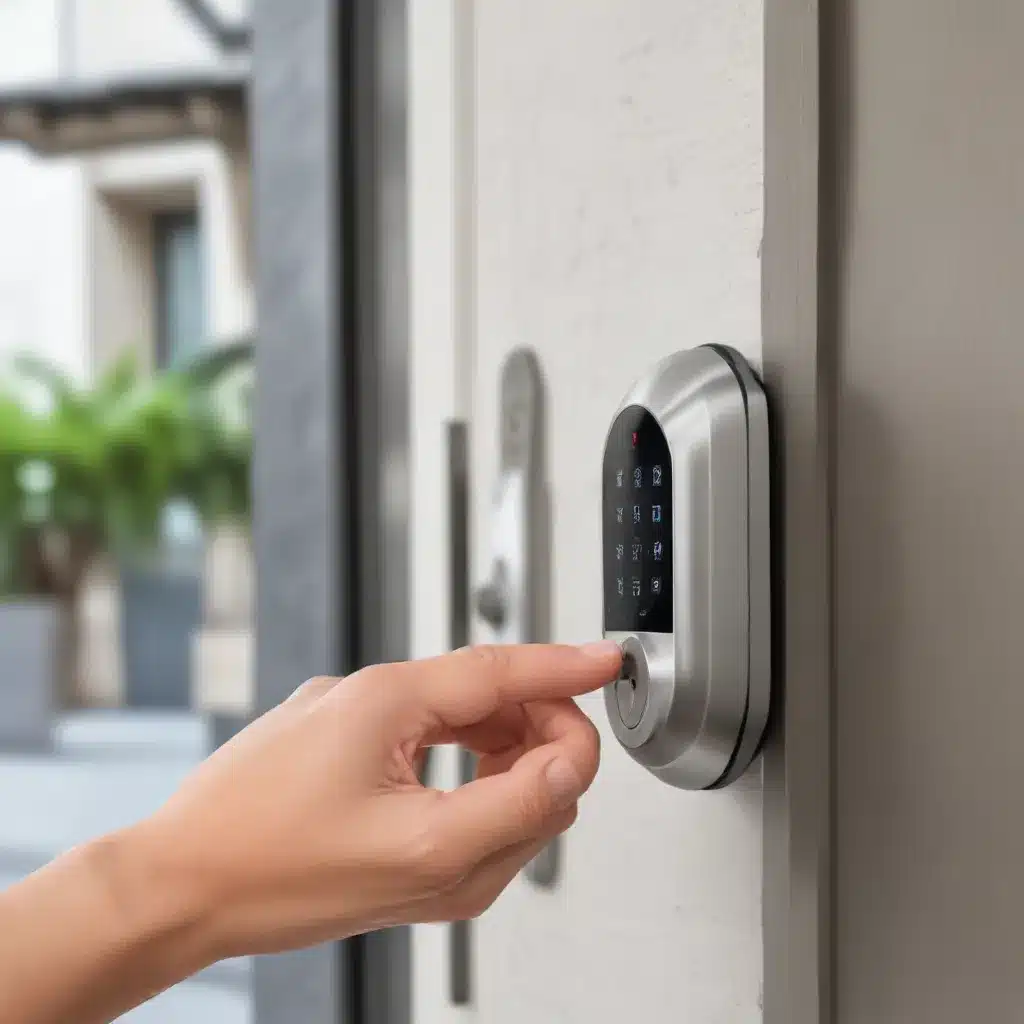
The landscape of home and business security is evolving rapidly, driven by the integration of the Internet of Things (IoT) and innovative locking technologies. As a seasoned locksmith serving the Washington, DC metropolitan area, I’ve witnessed firsthand the transformative power of IoT-enabled locking systems, which are revolutionizing the way we approach security and access control.
Connectivity and Networking
At the heart of this evolution is the seamless connectivity enabled by the IoT. Smart devices, sensors, and control systems are now woven into the fabric of our living and working spaces, creating a network of interconnected security components. This integration allows for real-time monitoring, remote management, and automated responses, empowering homeowners and business owners to maintain a vigilant watch over their properties.
Sensor Technology
The proliferation of sophisticated sensors has been a game-changer in the security industry. Motion detectors, door/window sensors, and cameras can now be strategically placed throughout a property, providing a comprehensive view of activity and potential threats. These sensors collect and transmit data, allowing for the detection of unusual patterns or unauthorized access attempts, triggering immediate alerts and response mechanisms.
Data Acquisition and Processing
The vast amounts of data generated by IoT-enabled locking systems are analyzed and processed to provide valuable insights. Advanced analytics algorithms can identify anomalies, predict maintenance needs, and even learn user behavior to anticipate security risks. This data-driven approach empowers property owners to make informed decisions and proactively address security concerns, ultimately enhancing the overall safety and protection of their assets.
Traditional Locking Systems
Historically, traditional locking systems, such as mechanical keys and deadbolts, have been the mainstay of security. While these solutions have served their purpose, they often lack the flexibility, remote access, and advanced features that modern security demands. The limitations of traditional systems, including the vulnerability to physical tampering and the inconvenience of key management, have paved the way for the rise of IoT-enabled locking systems.
Limitations of Traditional Systems
Mechanical keys can be easily duplicated, and deadbolts can be compromised through brute-force techniques, leaving properties vulnerable to break-ins. Moreover, the inability to monitor or control access remotely can make it challenging for property owners to respond promptly to security breaches or unauthorized entries.
IoT-Enabled Locking Systems
IoT-enabled locking systems, on the other hand, offer a comprehensive solution that addresses the shortcomings of traditional approaches. These advanced systems incorporate smart locks, connected sensors, and cloud-based management platforms, providing a seamless and secure access control solution.
Benefits of Integration
The integration of IoT-enabled locking systems offers a multitude of benefits, including enhanced security, improved access management, and increased convenience. Smart locks with biometric authentication or unique digital codes can replace traditional keys, eliminating the risk of unauthorized duplication. Real-time alerts and notifications can be sent to property owners, informing them of attempted entries or suspicious activities, allowing for immediate response.
Deployment Considerations
When deploying IoT-enabled locking systems, it’s crucial to consider factors such as network connectivity, data privacy, and user-friendliness. Ensuring reliable Wi-Fi or cellular coverage, implementing robust data encryption protocols, and designing intuitive user interfaces are essential for a seamless and secure integration.
Scalability and Flexibility
One of the significant advantages of IoT-enabled locking systems is their scalability and flexibility. These solutions can be tailored to the specific needs of residential, commercial, or industrial properties, ranging from single-family homes to large-scale commercial complexes. The modular nature of IoT-enabled systems allows for easy expansion and upgrades, ensuring that security measures can evolve alongside the changing needs of the property.
Access Monitoring and Reporting
IoT-enabled locking systems provide comprehensive access monitoring and reporting capabilities. Property owners can track and review logs of who has accessed their property, when, and for how long. This level of visibility is invaluable in identifying potential security breaches, investigating incidents, and ensuring accountability.
Remote Management and Control
The ability to remotely manage and control access to a property is a game-changer. IoT-enabled locking systems allow property owners to lock or unlock doors, grant temporary access, and monitor activity from anywhere, using their smartphones or web-based interfaces. This remote control feature is particularly beneficial for property managers, homeowners, and business owners who need to maintain oversight and control over their premises, even when away.
Automated Responses and Notifications
IoT-enabled locking systems can be programmed to trigger automated responses and send real-time notifications in the event of security breaches or unauthorized access attempts. For example, if a door is opened during non-business hours or by an unrecognized user, the system can instantly alert the property owner, activate security cameras, and even trigger a lockdown protocol, ensuring a swift and effective response.
Emerging Trends in IoT-Enabled Security
As the IoT landscape continues to evolve, we’re witnessing the emergence of even more advanced security features. Artificial Intelligence (AI) and machine learning are being integrated into IoT-enabled locking systems, allowing for predictive analytics and adaptive security measures. These systems can learn user patterns, detect anomalies, and proactively adjust access control protocols to enhance overall security.
Challenges and Considerations
While the integration of IoT-enabled locking systems offers tremendous benefits, it’s crucial to address the challenges and considerations that come with this technology. Ensuring data privacy, maintaining robust cybersecurity measures, and addressing interoperability between different IoT devices and platforms are vital to the success of these systems.
Roadmap for Adoption
As a seasoned locksmith serving the Washington, DC metropolitan area, I strongly encourage property owners to embrace the future of security by integrating IoT-enabled locking systems. By investing in these innovative solutions, you can enhance the protection of your assets, improve access management, and stay ahead of the curve in an ever-evolving security landscape.
To learn more about the latest IoT-enabled locking technologies and how they can benefit your property, please visit https://www.locallocksmithwashingtondc.com/. Our team of expert locksmiths is dedicated to providing tailored security solutions that cater to the unique needs of our local community.


